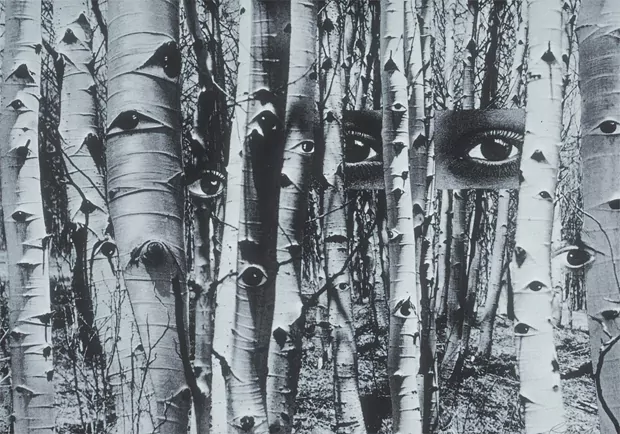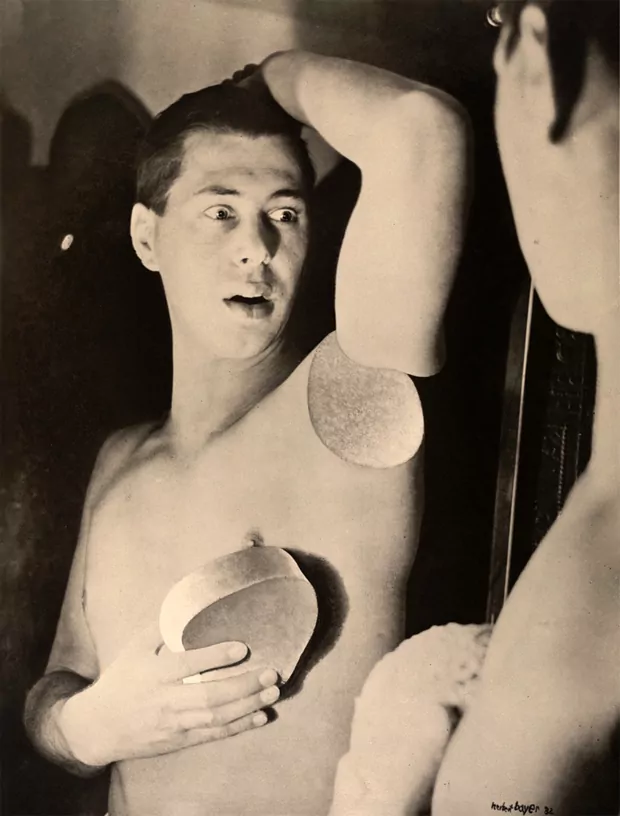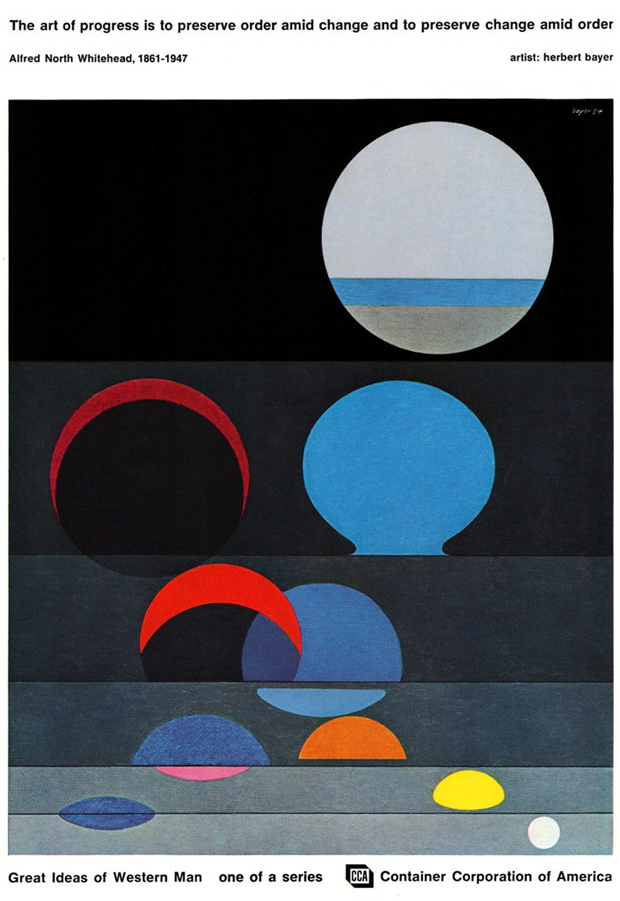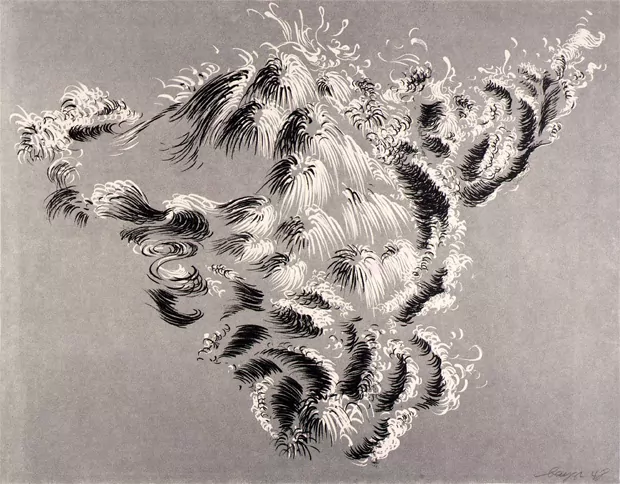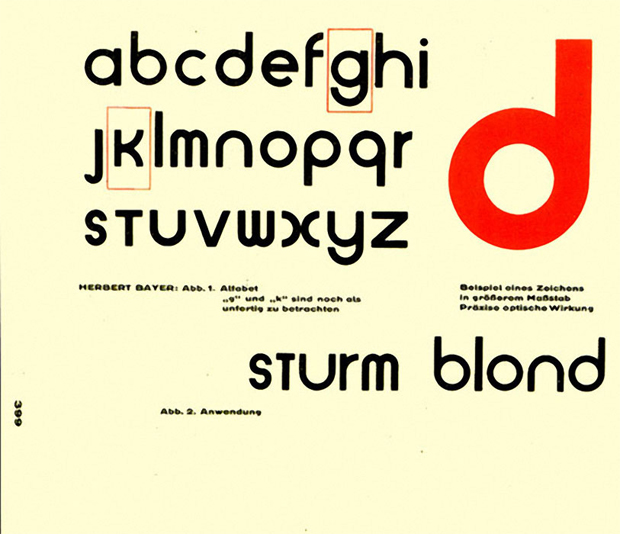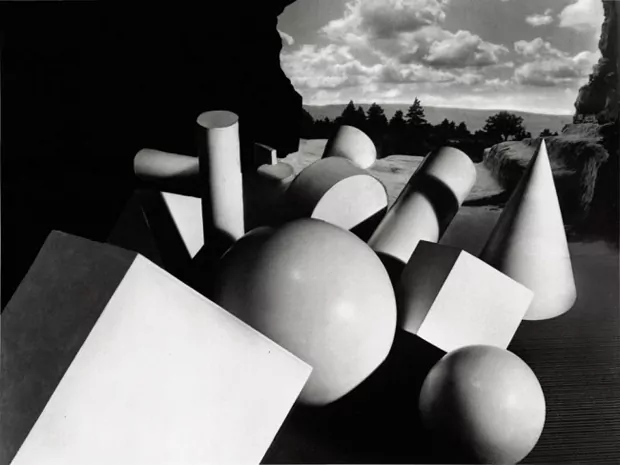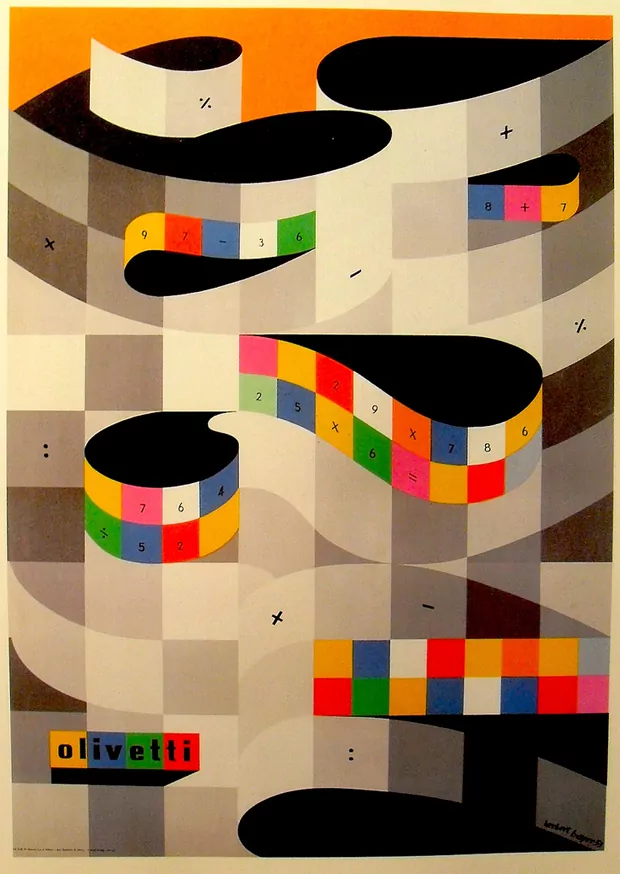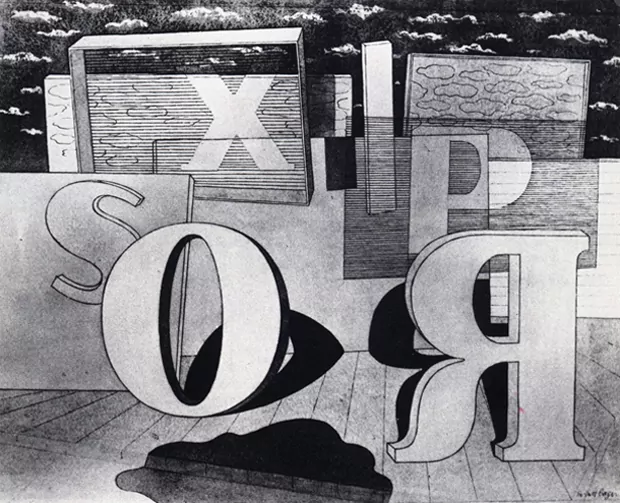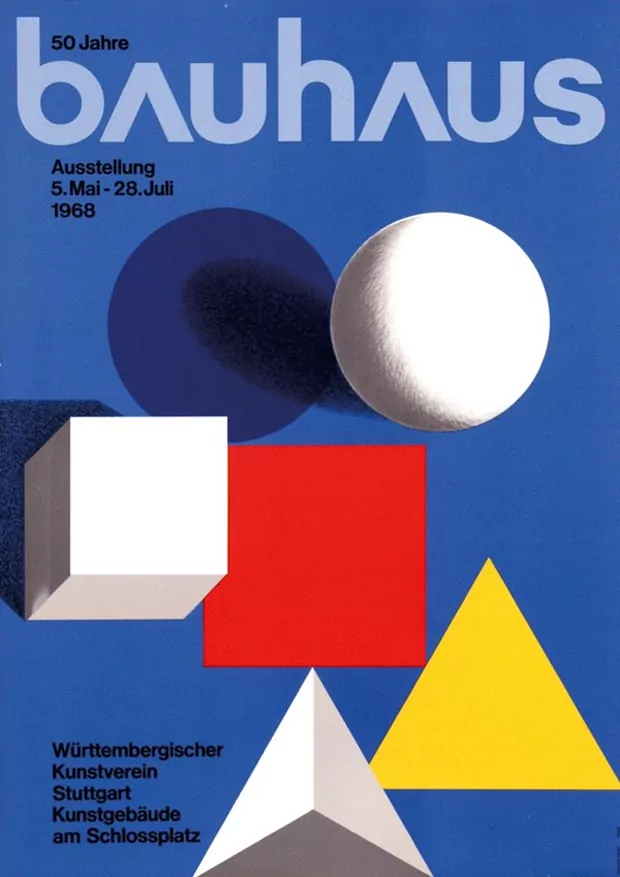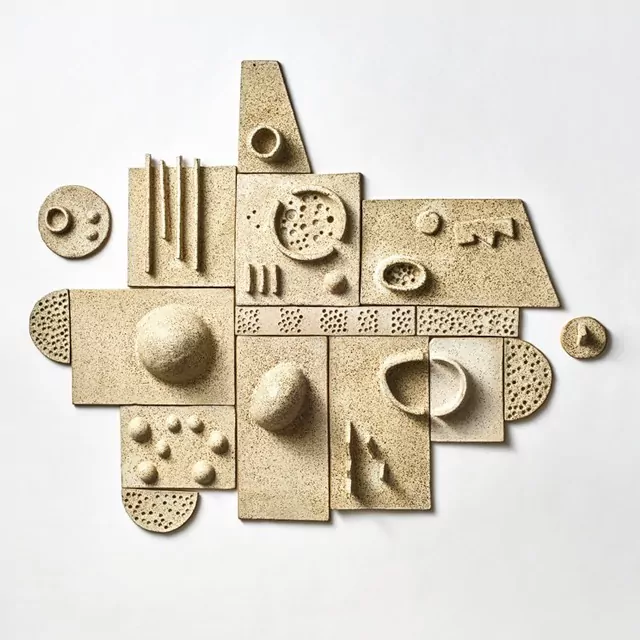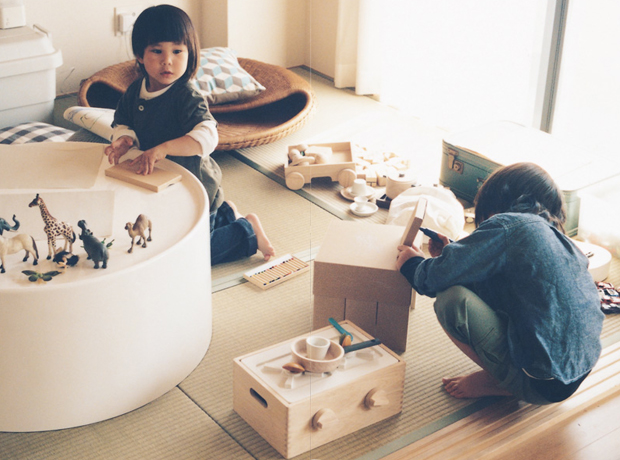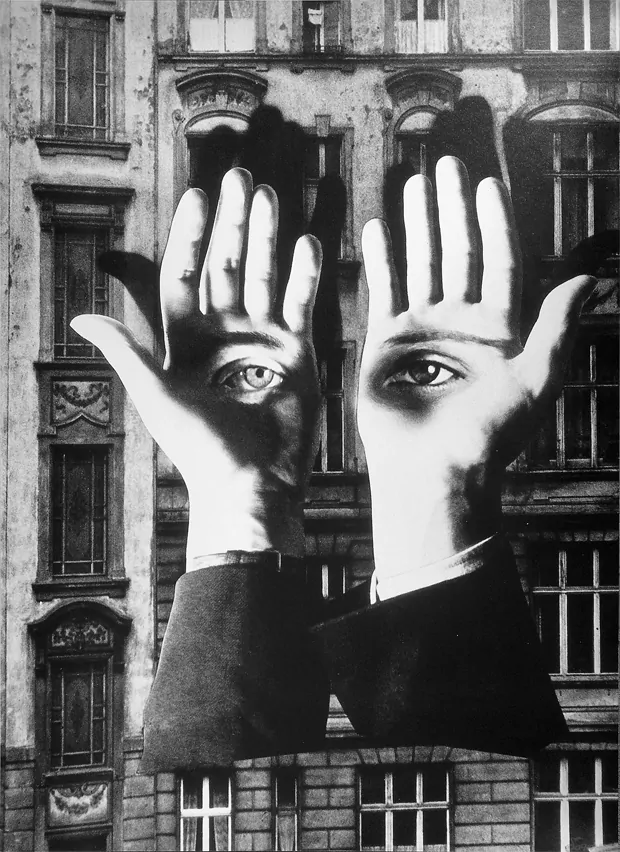
Collection of work from Herbert Bayer
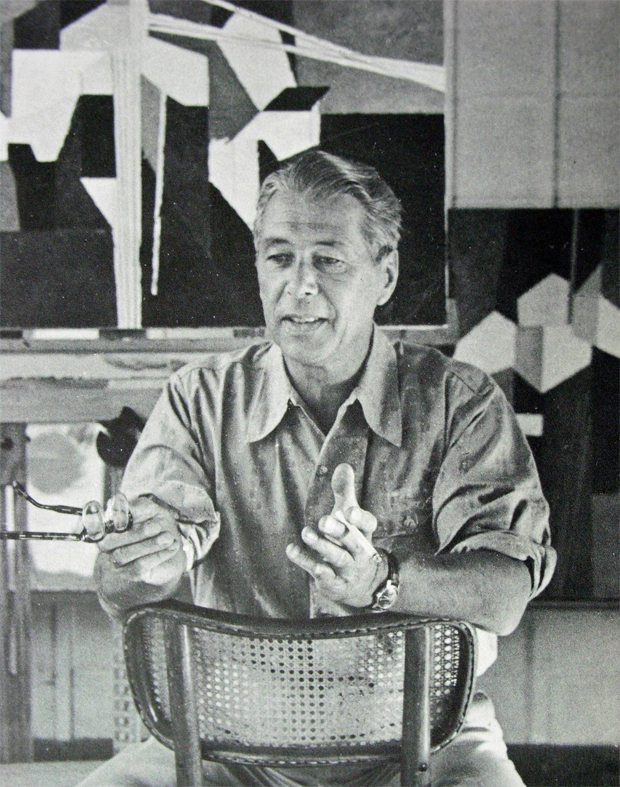
It’s not everyday that I put together a more historical type post, however once I find one I often get bitten by the bug and a few follow in quick succession. So after sharing the wooden masterpieces of Alexandre Noll yesterday I went home and began reading about the Austrian multi-discipline designer and all round creative that was Herbert Bayer. He is someone who’s work I’ve crossed paths with before however I’d never really taken time to consider his life’s work as a whole, so hopefully I can provide you all with somewhat of an insightful overview today.
Born at the turn of the 20th century in 1900 Herbert Bayer joined the Bauhaus in Weimar at the tender age of 21. He would eventually find himself to be the last recognised member alive until his death in 1985, with the lessons he learned in his time at the school defining him both as an artist and a designer. On initial arrival Bayer was passionate about both typography and advertising, these would be areas which he would make significant gains in, however the school didn’t run workshops on these subjects at the time so he took up mural painting where he studied under the great Russian painter and theorist Wassily Kandinsky.
Walter Gropius, who founded the school, had seen much promise in the young Austrian and whilst Bayer worked away for four years studying Gropius noted where his passions lied and by 1925 Herbert was appointed director of the printing and advertising for the Bauhaus. A year prior to this Bayer had been encouraged by professor Moholy-Nagy to experiment with typography in his own time and this had lead to the first Bauhaus book, graphical design and work for the Thuringian government. With his appointment of director Bayer was now responsible for the design of the schools printed publications and so began to experiment with a new medium which he would later master, the still photograph.
With the likes of Dali and other key members of the surrealist movement at the time reaching full flow, Bayer would also enter into this movement with iconic photos such as the metamorphosis, the lonesome big city dweller, and his mind boggling self portrait which he put together in 1932. All of these can be seen below with the eyes of the city dweller being one of my favourite photographs of all time. I just love the combination of the everyday elements into something completely irrational and subconscious, it’s great example of juxtaposition in a photo and really eloquently sums up the artistic movement of this era in my eyes.
Although photography was one of my first creative loves this is not why I admire the work of Herbert Bayer, it’s the sheer number of creative fields that he left his own individual mark on which is most inspiring in my eyes. Whenever he came upon something creative that he thought he could improve he would set his entire attention to this and not give in until he mastered it. Across his lifetime he worked as typographer, an advertising artist, a painter, photographer, sculptor, architect and interior designer. He really was and inspirational character and somebody that is rightly held in high regard globally. I hope what we have here inspires you and if you’ve got the time I’m sure conducting further research of your own won’t leave you disappointed by any stretch of the imagination.
